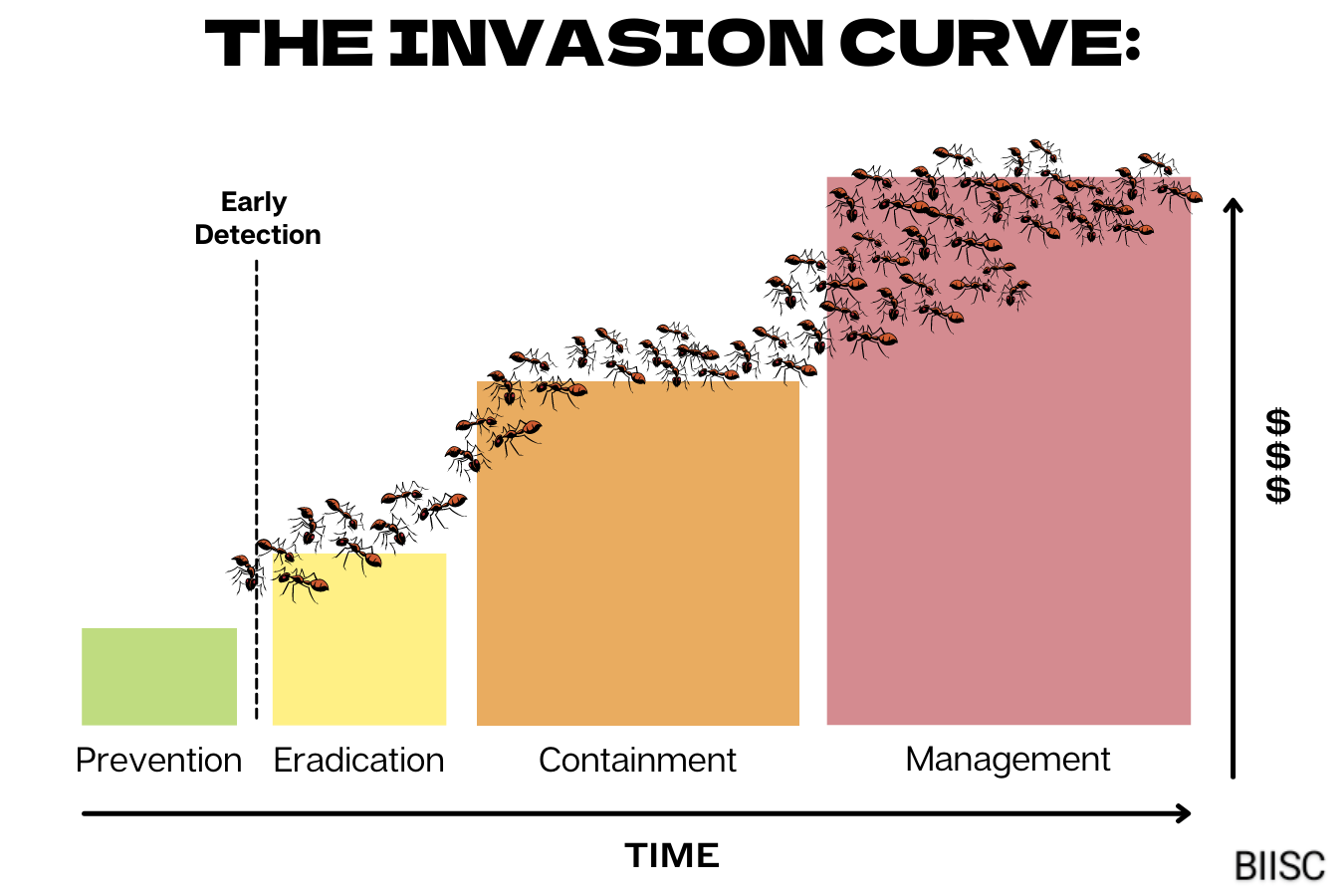Hawaii Project Resources:

Hawaii’s coastal habitats encompass a diverse range of ecosystems including beaches, rocky shores, coastal dunes, tide pools, estuaries, and coral reefs. This biodiversity attracts visitors from around the world and tourism is a significant economic driver for the state. The coasts also play an important role in Hawaiian subsistence and cultural traditions.
Unfortunately, invasive species can impact native species and even alter entire ecosystems. Invasive grass species can outcompete Hawaii’s native plants on beaches and dunes which can increase erosion and alter habitat for nesting sea turtles and shorebirds. Likely introduced through the aquarium trade, lionfish are voracious predators and can reduce the native reef fish recruitment of a coral reef by nearly 80%. Invasive algae can smother coral reefs and tide pools as well as wash onto shore impacting nesting sites.
Invasive species are often considered the number one threat to Hawaii’s biodiversity, but they also have major cultural and economic impacts. It is estimated that each year invasive species the state spends tens of millions of dollars in management costs and experiences up to $180 million dollars in damage annually. Already highly dependent on imported food, invasive species can also impact food security. Diseases introduced by invasive species and non-native insects can threaten local agriculture and invasive plant species like red mangroves can affect Loko I’a (Native Hawaiian fish ponds) impacting cultural practices and food production.



While many species native to Hawaii have become invasive in other parts of the world, their populations in Hawaii are threatened by habitat loss and competition with introduced species. Some of the most common aquatic invasive species include peacock grouper, lionfish, orange keyhole sponge, gorilla ogo, leather mudweed, smothering seaweed, and several other seaweed species.
Terrestrial invasive species that impact the coast include feral hogs, mongoose, little fire ants, brown tree snakes, and rats. Invasive plant species include fireweed, albizia trees, red mangrove, strawberry guava, and miconia.


The best way for you to help prevent the spread of invasive plant species is to stop new outbreaks before they start. Each of us has a role in keeping our waterways clean and healthy for future generations. For example, the best way that you can help to prevent the spread of aquatic invasive species is to always clean your boat after use.
Early detection can help avoid many of the environmental and economic losses caused by invasive species. Reporting invasive species to the experts could stop the next invasion.
Report invasive species through the national Early Detection and Distribution Mapping System (EDDMapS), report online at 643pest.org or call the 643-PEST telephone hotline.
Many states have invasive species reporting hotlines, online forms, or mobile apps. Using your internet browser, search with the terms “invasive species reporting [enter your state or county]” to discover how best to report in your area.

While invasive species pose major challenges, a number of management options exist. Prevention is important, but that is beyond the scope of this website. Physical or mechanical control, chemical control, cultural management, and biological control are all useful tools.
Removing invasive species and restoring native species brings myriad benefits. Restoration of wetlands, dunes, and other coastal areas protects against erosion, reduces flooding, and improves water quality. Native birds, fish, and other wildlife return to restored areas, enhancing fisheries and biodiversity. Habitat improvement helps the recovery of threatened or endangered species. Tourism and outdoor recreation benefit as people fish, bird watch, or visit wildlife areas.
Invasive species removal can be a rewarding activity for any group of concerned citizens. Many species can be removed by hand, with little training. It is best to consult a local expert to understand the likely long-term outcomes of your effort. Some plant species can only be substantially reduced using fire, changing land elevation, or applying herbicides across large areas, in accordance with permits. One important role for local residents is participating in identification efforts to stop the spread of these species before they firmly take hold.


We need your help to improve the Toolkit by completing our easy, 3-minute survey. Your insight is valuable to us.